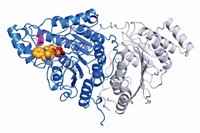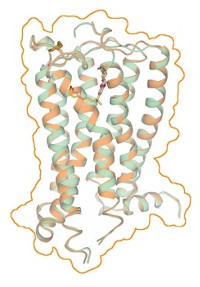Advertisement
Grab your lab coat. Let's get started
Welcome!
Welcome!
Create an account below to get 6 C&EN articles per month, receive newsletters and more - all free.
It seems this is your first time logging in online. Please enter the following information to continue.
As an ACS member you automatically get access to this site. All we need is few more details to create your reading experience.
Not you? Sign in with a different account.
Not you? Sign in with a different account.
ERROR 1
ERROR 1
ERROR 2
ERROR 2
ERROR 2
ERROR 2
ERROR 2
Password and Confirm password must match.
If you have an ACS member number, please enter it here so we can link this account to your membership. (optional)
ERROR 2
ACS values your privacy. By submitting your information, you are gaining access to C&EN and subscribing to our weekly newsletter. We use the information you provide to make your reading experience better, and we will never sell your data to third party members.
Biological Chemistry
Cannabinoid receptor revealed
Two research teams separately publish the first crystal structures of the CB1 receptor
by Ryan Cross
November 21, 2016
| A version of this story appeared in
Volume 94, Issue 46
Two research groups have independently elucidated the first crystal structures of the cannabinoid receptor CB1, a cell-membrane protein involved in a host of appetite, pain-sensation, memory, and other physiological processes. The protein’s floppy movements between active and inactive states make it difficult to study, so Alexandros Makriyannis of Northeastern University and colleagues designed a strong inhibitor to bind and help immobilize CB1 to get a better glimpse of its structure (Cell 2016, DOI: 10.1016/j.cell.2016.10.004). Meanwhile, a team led by Daniel M. Rosenbaum of the University of Texas Southwestern Medical Center published a CB1 structure with slightly higher resolution, which they stabilized by binding the antiobesity drug taranabant (Nature 2016, DOI: 10.1038/nature20613). Because cannabinoids are quite varied themselves, Ken Mackie of Indiana University says the new papers “finally give us a clear sense of the nooks and crannies in CB1 that cannabinoids can interact with.” Despite some discrepancies, both groups discovered a binding pocket that allows lipophilic cannabinoid molecules to interact with the receptor. “A long-held hypothesis about how cannabinoids enter the receptor has now been proven,” says Patricia Reggio of the University of North Carolina, Greensboro. Reggio adds that the structural work could be a launching pad for designing new therapeutics targeting CB1.




Join the conversation
Contact the reporter
Submit a Letter to the Editor for publication
Engage with us on Twitter